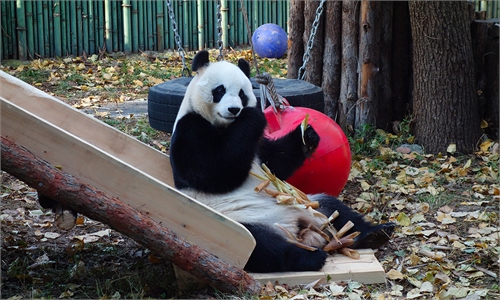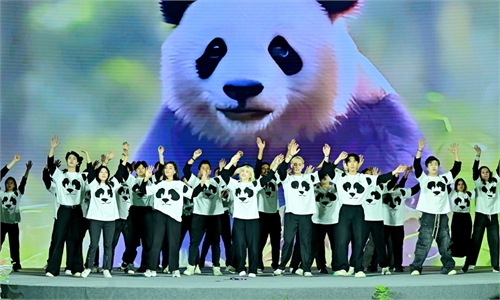ARTS / CULTURE & LEISURE
Sixteen Japan-born crested ibises settle in Beijing Zoo

Crested ibises Phto: IC
Sixteen Japan-born crested ibises, offspring of birds originally sent from China, officially settled at the Beijing Zoo on Wednesday after completing a month-long quarantine.They will be raised alongside the zoo's current 23 crested ibises for breeding.
"The Beijing Zoo has established the first comprehensive technical system for protecting crested ibises, covering everything from wildlife rescue, artificial rearing and breeding to chick rearing," Zheng Changming, head of the zoo's species management department, told the Global Times on Wednesday.
"We have provided technical support from ex-situ conservation centers to in-situ conservation efforts, which has helped increase the global population of crested ibises from just seven to nearly 10,000, alleviating their endangered status and making then a successful case in the global conservation of endangered species," he noted.
Mao Yu, head of the zoo's crested ibis team atold the Global Times that they have disinfected and cleaned the ibises' enclosures and prepared suitable food for them, including their favorite meals such as loaches and mealworms.
"The crested ibis is naturally timid and extremely sensitive to sound; even the slightest noise can startle them," Mao said. "The month was not just about quarantine; it was also about building a bond with them through my companionship."
Renowned for their rarity and striking appearance, the crested ibis is a globally endangered species and a first-class national protected animal in China. Due to environmental changes, the crested ibis' population sharply declined in the late 19th century and was once believed to have disappeared from the wild.
In 1981, scientists discovered seven wild crested ibises in Yaojiagou, Yangxian county, Shaanxi Province, after years of research.
One of the male chicks was sent to the Beijing Zoo for breeding, and was named Huahua, according to a report from the Beijing Evening News.
As China's first artificially reared crested ibis, Huahua was loaned to Japan's Crested Ibis Conservation Center from 1985 to 1989 for collaborative breeding. Afterward, Huahua lived at the Beijing Zoo.
In 1992, the Beijing Zoo overcame three major challenges in ex-situ conservation, rearing, survival, and breeding, to successfully hatch crested ibis chicks. These chicks were carefully raised by humans and were able to fly.
Thanks to the dedicated efforts of several generations of caretakers and technical staff, the crested ibis population at the Beijing Zoo grew to 23.
One of the ibises, named Pingping has set a record as the world's oldest crested ibis. Born in 1986 in Yangxian, Shaanxi, Pingping is now over 100 years old in human terms. With the new arrivals from Japan, the total crested ibis population at the Beijing Zoo has reached 39.
The crested ibises were born between 2016 and 2022 at Japan's Sado Crested Ibis Conservation Center.
An anonymous industry source surnamed Wen told the Global Times that in 1999, when the crested ibis in Japan was on the verge of extinction, China gifted two precious crested ibises - Yangyang and Youyou - to Japan, which played a crucial role in saving the Japanese crested ibis population.
"Since then, to ensure genetic diversity, China has repeatedly gifted precious crested ibises to Japan, helping the country rebuild its crested ibis population," he said. "Furthermore, to further protect this endangered species and promote the conservation of both the ibis population and their habitats, China's National Forestry and Grassland Administration has collaborated with Japan on relevant projects, jointly completing regional environmental construction projects for the harmonious coexistence of humans and crested ibises."



